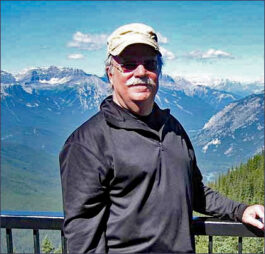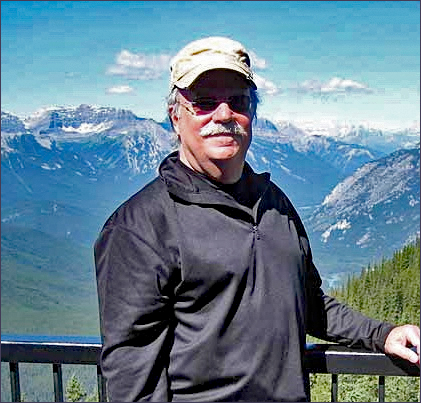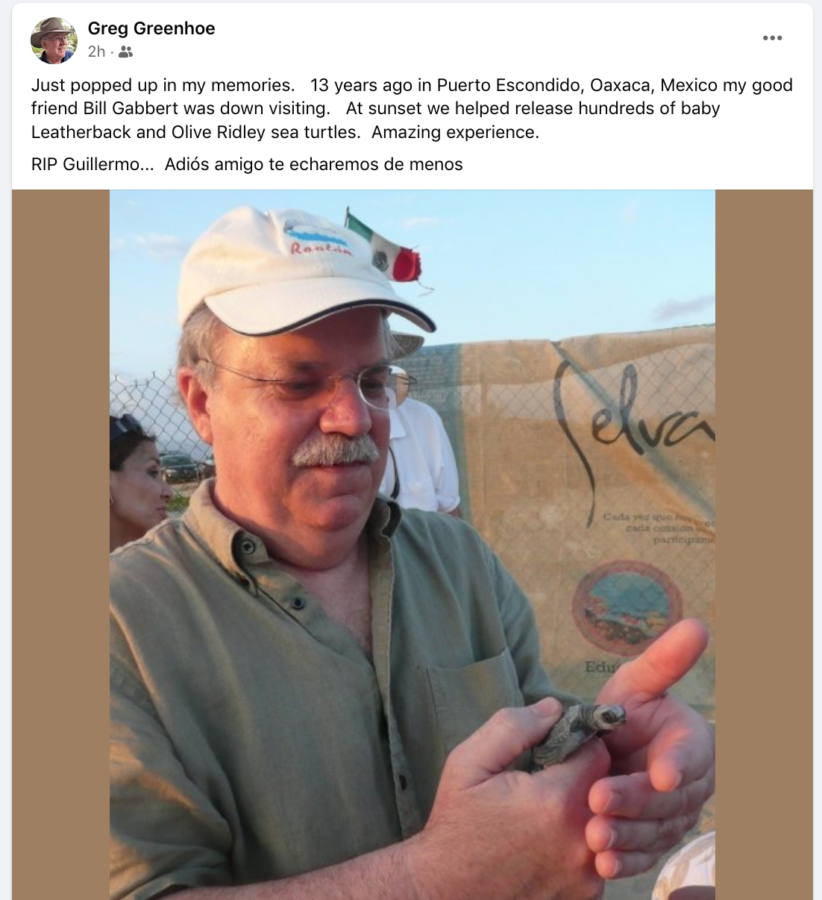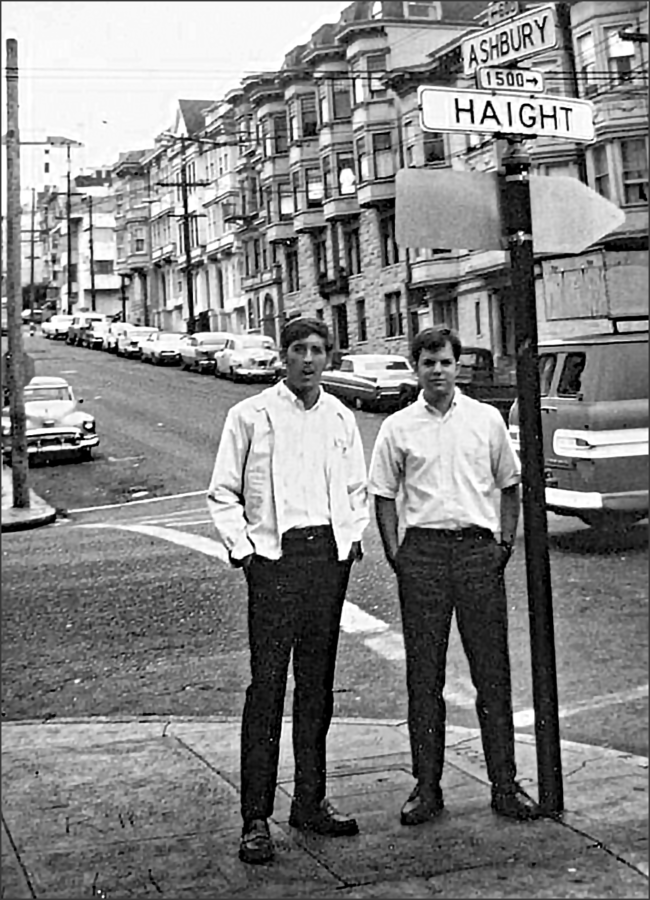
A year ago today …

News and opinion about wildland fire

THIS IS a temporary post,
in the aftermath of numerous fatalities on fires this season,
and considering the comments posted publicly on both sites and the piles of emails I’m getting privately from readers,
and I’d really like for all of our readers to review these two posts,
both written by Bill Gabbert and fully endorsed today by me.
Examples of catastrophic events on wildland fires that led to changes
— AND —
Thank you.
~ Kelly Andersson
The IAWF establishment of the Bill Gabbert Fellowship in Wildfire Reporting was initiated by a generous donation from Mark C. Sedenquist, a long-time supporter of WildfireToday, good friend of Bill Gabbert, and a 50-year student of fire.
Sedenquist worked on the Angeles National Forest in 1973-1974 on Engine 314, and on the Coronado National Forest in 1976 as Silver Peak Lookout.
“Over the last five decades, I’ve become a student of wildland fire,” he told us. “I have many friends in the community — some still serving on incident management teams, others retired. And just to provide perspective, my home and business burned in the 1993 Altadena Fire in southern California.”

Sedenquist had a long series of email conversations with Bill, and he still serves as a fire reference and resource to others. “Even though I now live in Las Vegas, Nevada, friends and family in California still call me first when they spot smoke in the local hills and want to know what they are looking at. And thanks to the wonder of digital scanners and optical devices, I can usually provide real-time information faster than the local media are providing about their local fires.”
When the Gabbert Fellowship launches its first reporting projects, we’ll be the first to thank Mark Sedenquist, who demonstrates the value of being a student of fire — a concept Bill Gabbert often revisited.
We ask you to join with Mark Sedenquist and others to add your support to the Fellowship fund.
As we solicit donations to help fund the Fellowship, we will also ask for your ideas for what the Fellowship will become — and we’re interested in our readers’ and advertisers’ ideas about its management.
For more on Bill Gabbert’s work, check out these reflections by Chuck Bushey and Wade Ward.
Longtime fire journalist Bill Gabbert left us way too soon last year, and many of us will miss him and his contributions to the world of wildfire for a long time to come.
It was pancreatic cancer that took him, and he had a rough go of it for his last year or so, but then he was one of the fortunate few who go quietly and easily in their sleep.

When the International Association of Wildland Fire (IAWF) accepted Bill’s generous offer to continue the form, format, and platform of his wildfire journalism websites, we were hoping for many conversations with him, with more time to absorb his advice and knowledge.
Those conversations were far too few, though, and the time far too short. But we are now pleased to announce the BILL GABBERT FELLOWSHIP in Wildfire Reporting, which will fund and mentor and publish the sort of innovative wildfire reporting that Bill exemplified.
An initial donation from a longtime supporter of Wildfire Today helped launch the program. Building on an auspicious start, the IAWF is now accepting donations to honor Bill’s work by developing and supporting a funded program to encourage innovators in wildfire journalism.
To remember Bill and support his legacy into the future, just use the red “Donate Online” link at iawfonline.org/donate – unless you specify otherwise, all donations to IAWF this year will support the BILL GABBERT FELLOWSHIP.
Later this year, officers will announce an application process to screen people and projects that feature reporting by fire-savvy writers and innovative media projects for Wildfire Today and Fire Aviation, with some articles jointly produced with Wildfire magazine.
In the next few posts — by Chuck Bushey and Wade Ward — we share a few memories from Bill’s friends and colleagues. Let us know if you have more.
by Chuck Bushey
Meriwether William “Bill” Gabbert II of Senatobia, Mississippi died peacefully on January 14, 2023 at age 75 from cancer.
Nobody that I know ever called him Meriwether. He shared that name with Meriwether Lewis, half of the renowned Lewis & Clark Expedition, and Meriwether is the name of the canyon mouth adjacent to Mann Gulch above the Gates of the Mountain Wilderness on Montana’s Missouri River.
Bill and his siblings grew up in the same small rural town south of Memphis where he was born in 1947. After high school he went on to Mississippi State University for Agriculture and Applied Science (commonly called Mississippi State University) in the central Mississippi community of Starkville. I can imagine that the change from Senatobia, population about 3200 persons, to the much larger community of Starkville (about 11,400 people at the time) and entering into studies at the university must have been a major eye-opening change for Bill.
After navigating university life, Bill graduated with his B.S. degree in Forestry. As we all do upon graduating, it was time for him to make decisions on which direction to head next with a budding career. Bill decided to join up with the U.S. Forest Service to further his forestry interests and education, so he headed West to California and soon added wildland fire to his forestry toolbox. In actuality he probably didn’t have much of a choice about entering into wildland fire; at that time during the 1970s all USFS employees were “firefighters” in some capacity. It was a requirement that everyone understood; this was an organization that had been born into fire. Bill obviously took quickly to the challenge, joining up with his first fire crew, the El Cariso Hotshots, in California. This crew was one of the very first hotshot crews, established just after World War II on the Trabuco District of the Cleveland National Forest.
Bill truly enjoyed his seasons with the hotshots and he frequently mentioned in later years his memories from these days. Those memories weren’t all fun – they included the fatalities the crew suffered during the 1959 Decker Fire and the 1966 Loop Fire – the latter was still a fresh and sore memory when Bill joined the crew.
Fire crews of all types are wonderful places to develop lifelong friendships as people move through the fire seasons. This was also a time during which Bill quickly learned the ins and outs of the structure and politics within the wildland fire community, knowledge that would serve him well later in life. He ended up with 20 years of service in the U.S. Forest Service, and then transferred to the National Park Service (NPS) for another 13 years. He eventually retired as the Fire Management Officer for the Black Hills National Forest in South Dakota; he was responsible for fire management on seven National Parks in South Dakota, Wyoming, and Nebraska. But he wasn’t even close to being finished with his fire career — he was just changing direction.
It was while Bill was with the NPS that I first got to know him. Bill was the Planning Section Chief on Rick Gale’s Type 1 Team based out of West Yellowstone, Montana during the 1988 Yellowstone Campaign. Our paths crossed whenever I would visit the fire camp there where I had established a USFS Northern Region (R1) satellite “Fire Behavior Service Center.” Yellowstone for that fire season was part of the R1 fire suppression responsibilities – what we all thought would be a “once-in-a-career” fire season.
Bill was obviously a very detail-oriented individual, a necessary and valued trait in that key position.
He and I met up again when he joined the IAWF as a new Board Member in 2004. He remained in that position for a year before assuming responsibilities as the IAWF’s brand new Executive Director (ED). Bill was a firm believer in the mission of IAWF– to promote communication within the global wildland fire community. He was the ideal detail-focused person to take on the director role, quickly organizing all of the disparate directions the association was growing into. Bill made it clear from the beginning that the ED role was not going to be a long-term job for him, and after a year under my term as IAWF President in 2008 he submitted his resignation.
At this time social media and blogging for many of us were still relatively new internet experiences. Bill had the idea of using these newish technologies in communication to further his ideas (and ours) regarding wildland fire communications. He quickly had Wildfire Today up and running – an online news site of wildland fire – with news stories spanning the globe but definitely U.S.-centric. His news updates and features and images and opinion pieces spread, and in 2012 he spun off a companion website which he called Fire Aviation, because this was a topic in wildland fire news that was growing in breadth and importance.

From the beginning these sites were a labor of love for Bill Gabbert, and a few of his passions quickly came to the forefront in his journalism, including what he called “students of fire.” He also focused on smoke impacts on firefighter health, political considerations of the jobs in fire, and perhaps most important, firefighter safety. He developed a wide-ranging global audience relatively quickly, and now and then he’d add on other expert authors and editors to round out and support both sites. He befriended and kept up with fire photographers and writers and editors — and agency leaders — not only in our relatively close wildland fire community, but internationally. He also made many friends in the fire-interested peripheral “public” – the tens of thousands out there who are interested in and connected with fire, such as family members, media, researchers, international fire personnel, and the large group of people who are just curious about the topic and how it influences our lives.
Bill Gabbert wrote on these topics almost daily, in a style that was easily understandable for readers who commonly get lost in or don’t care to digest the typical U.S. bureaucratic fire news.
Bill knew where to go and who to talk with to find the details he wanted, the core of the issue no matter the issue – he understood what was being said and could interpret or translate (without pulling any punches) for his readers. He had no qualms about writing on controversial fire topics, such as when Donald Trump and other politicians wanted to launch 4th of July fireworks from the heads of the Presidential sculptures at Mount Rushmore. This was just one of the Parks that had been Bill’s responsibility, and it’s a location with loads of highly flammable vegetation, at risk for trash and debris from fireworks with a history of both.

I wouldn’t call these efforts “work” for Bill. He loved doing it and being busy and involved “in the thick” of the wildland fire business, long after his official career retirement. These pursuits and activities of his also afforded him the opportunity to indulge in some of his other passions – including photography, motorcycle riding, and meeting up now and then with fire friends, which occasionally included a dark beer or two. His knowledge and networking skills also opened doors for him as a “retired” fire guy to occasionally work on short teams for hurricanes and other disaster response assignments, as well as traveling to international wildland fire events.
A few years after he had his sites up and running he and I had a discussion about the future of the successful work he had accomplished. It was a light conversation on succession, a topic that all organizations must have. I thought Wildfire Today would eventually be an excellent addition to the collection of communication organs that IAWF had developed. Bill had all sorts of new ideas he wanted to try out with the site, so he wasn’t at that point yet really interested, and truthfully IAWF wasn’t really ready yet either.
But the idea stuck in the back of our minds over the years. When Bill learned last year that he was terminally ill, he and IAWF began some talks about how a merger might be managed. I’m pleased to say Bill was happy that the IAWF Board agreed to take on the responsibility of moving Wildfire Today and Fire Aviation into the future — and it is an honor for IAWF to serve in this role. I’m sure he will be whispering in our ears as we advance the work he began and passionately served, as wildland fire news and communications become more vital around the world.
by Wade Ward
I first met Bill Gabbert in a forestry economics class in 1968 at Mississippi State where we were both forestry majors. The professor of the class coordinated summer jobs with the students and the Forest Service. The previous summer I had taken one of those jobs: a hotshot position with the Chilao Hotshots in southern California. I told Bill about the experience and he decided he wanted to go the next summer.
We went to see the professor who advised us, but he said he currently had only fire tower lookout positions and some timber stand improvement positions. Bill and I took the timber stand improvement positions, and we ended up in northern California at the Log Springs Ranger Station on the Mendocino National Forest, where we spent the summer running chainsaws and thinning trees. Twice our crew was sent to fires, where I assume someone thought chainsaws were needed. Both times we were not put on the fireline. Bill was disappointed.

We returned to Mississippi State and rented an off-campus duplex where we lived the following year. I graduated and was immediately drafted into the Army – as I won the 1969 draft lottery. Bill dropped out of school lacking only a one-hour credit to graduate; he returned to California as a member of an engine crew in southern California, where he could actually fight fires. He did not have to worry about the draft as he’d got a high number. He also eventually took another course and received his degree.
When I finished my Army stint I traveled by motorcycle to Lake Elsinore, California to visit with Bill. He was in love with his job, and he stayed with the Forest Service until transitioning to the Department of the Interior. I never visited him while he was in Indiana, but did so several times while he was in Hot Springs, South Dakota. I rode my motorcycle out there.
On one trip we made Bill decided to buy a bike, and he did that immediately. He and I made numerous bike trips together through the years, and I think perhaps the only thing he liked better than the bike trips was his career and his associates in the wildfire community. So it’s quite fitting that his ashes will be spread in National Parks … Paul Mims and I, along with another friend, will be taking some of Bill Gabbert’s ashes by bike to Rocky Mountain and Wind Cave National Parks. Family members and other friends will help spread his ashes in Yellowstone and the Grand Tetons.
